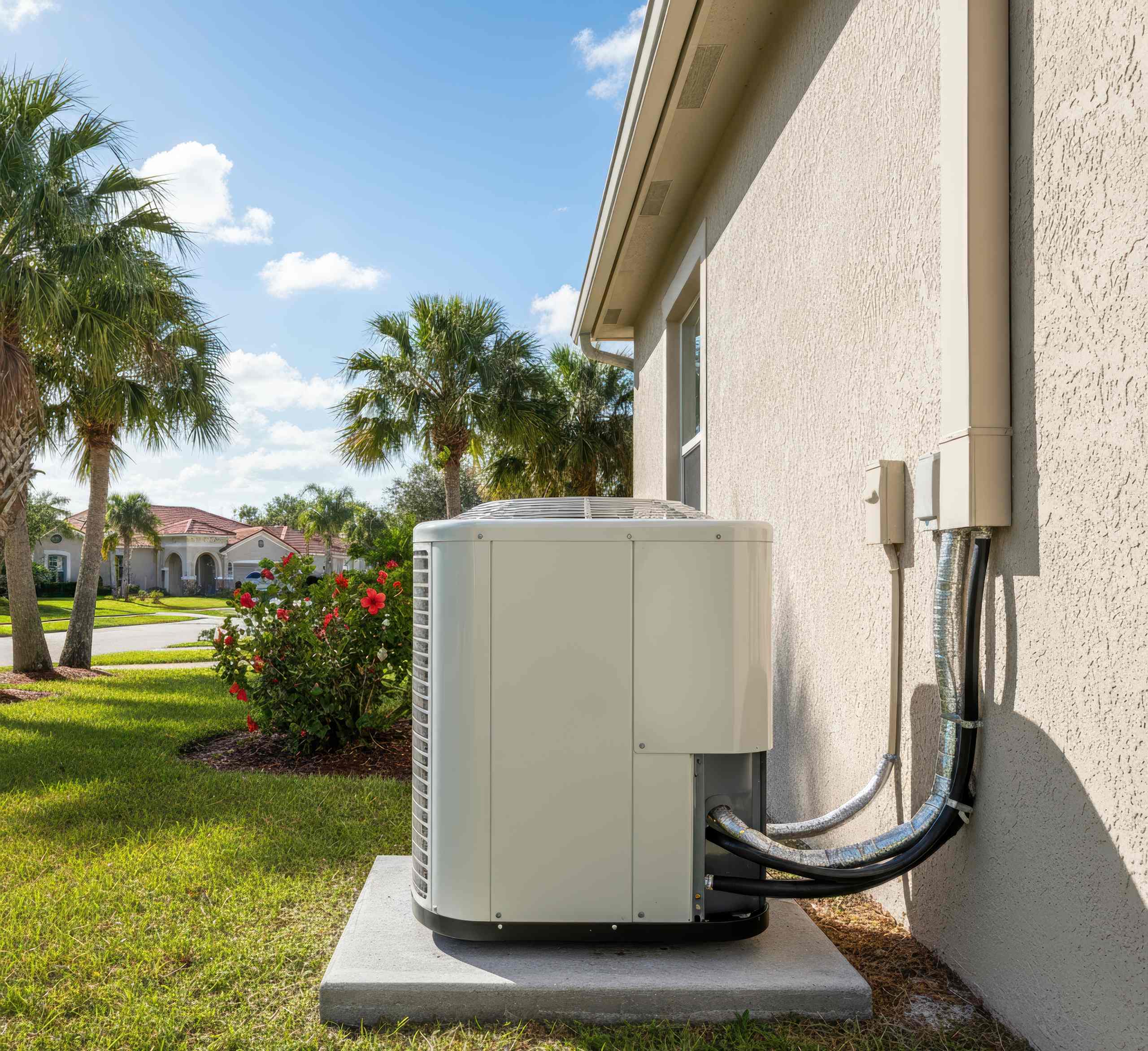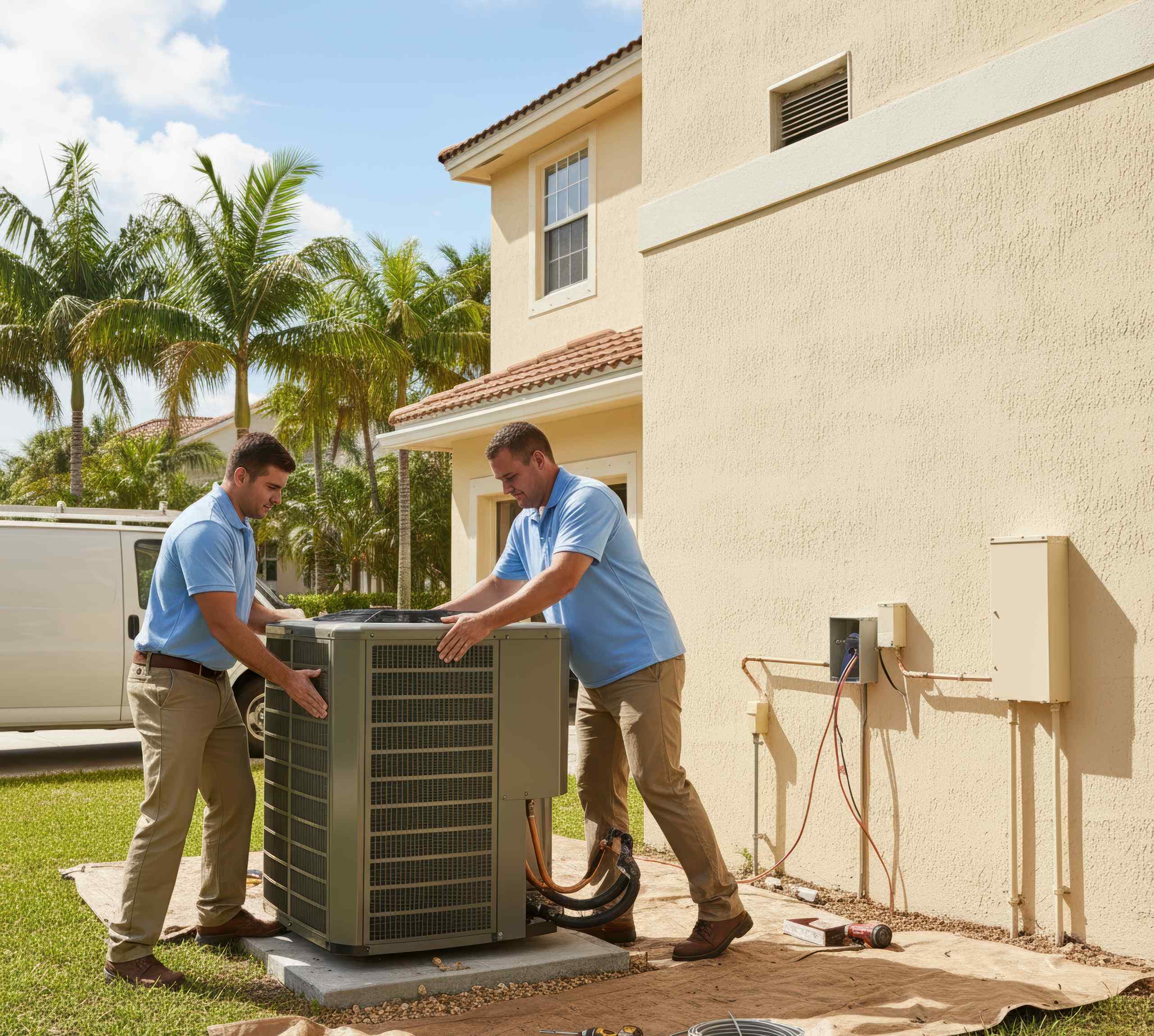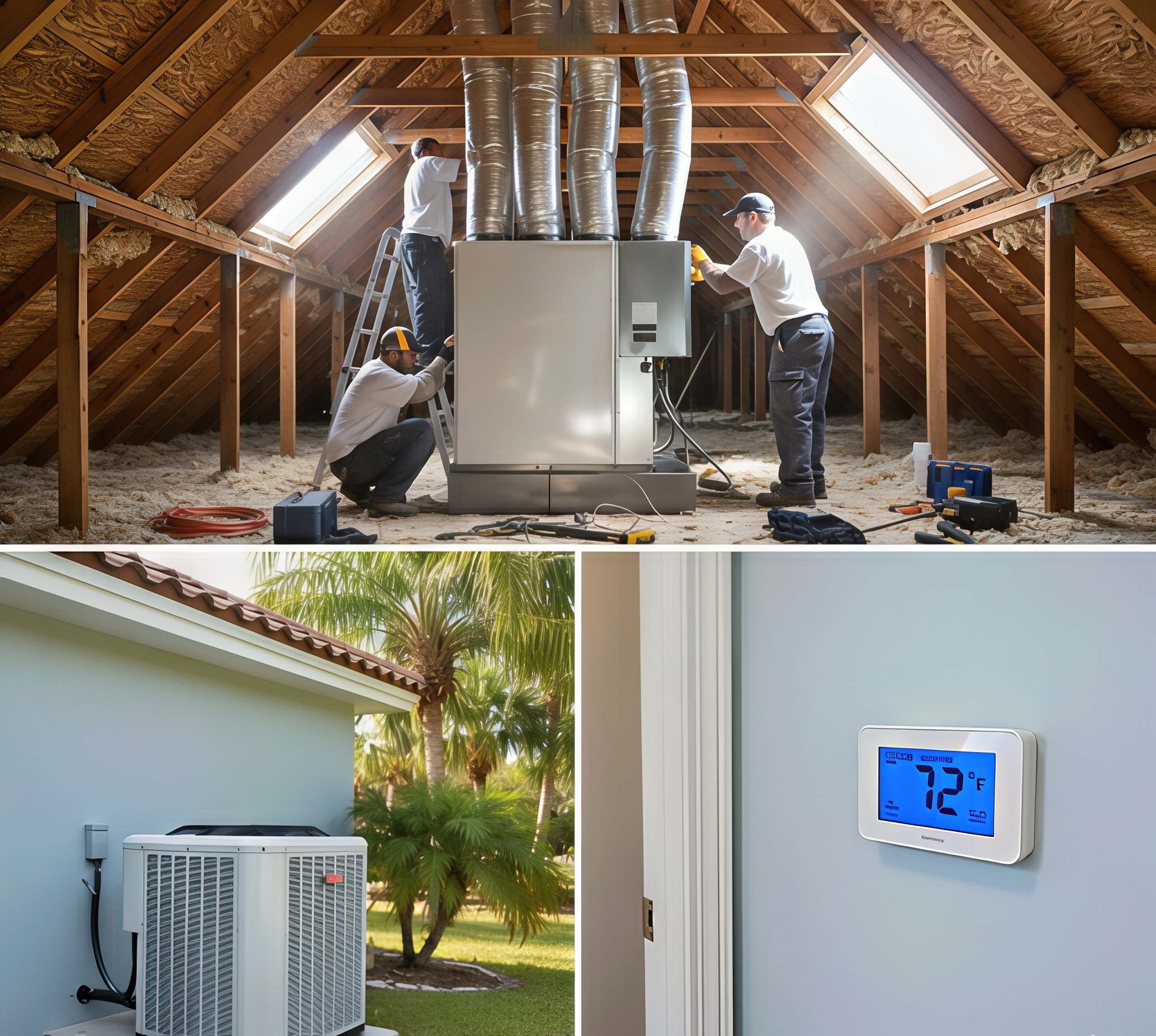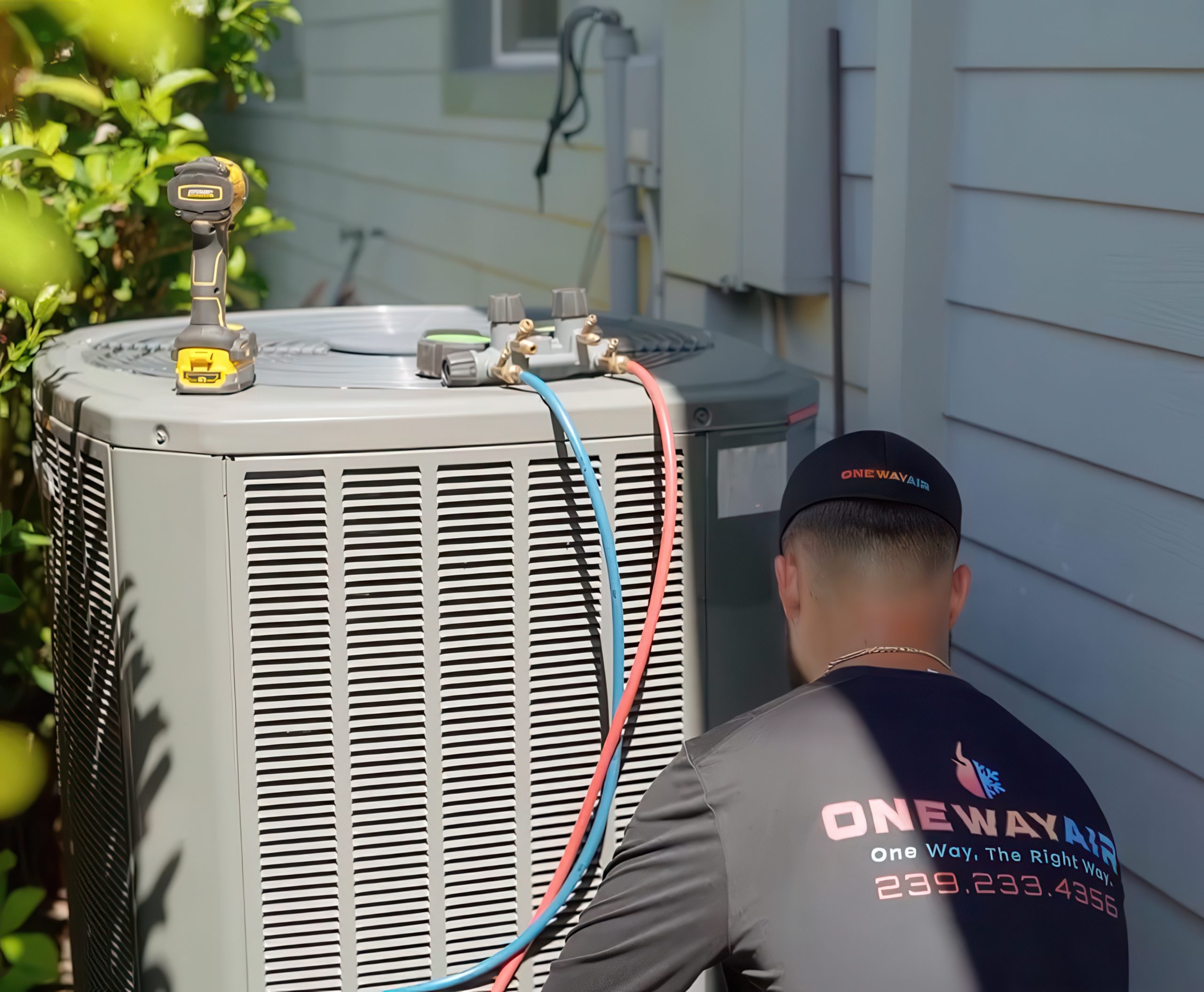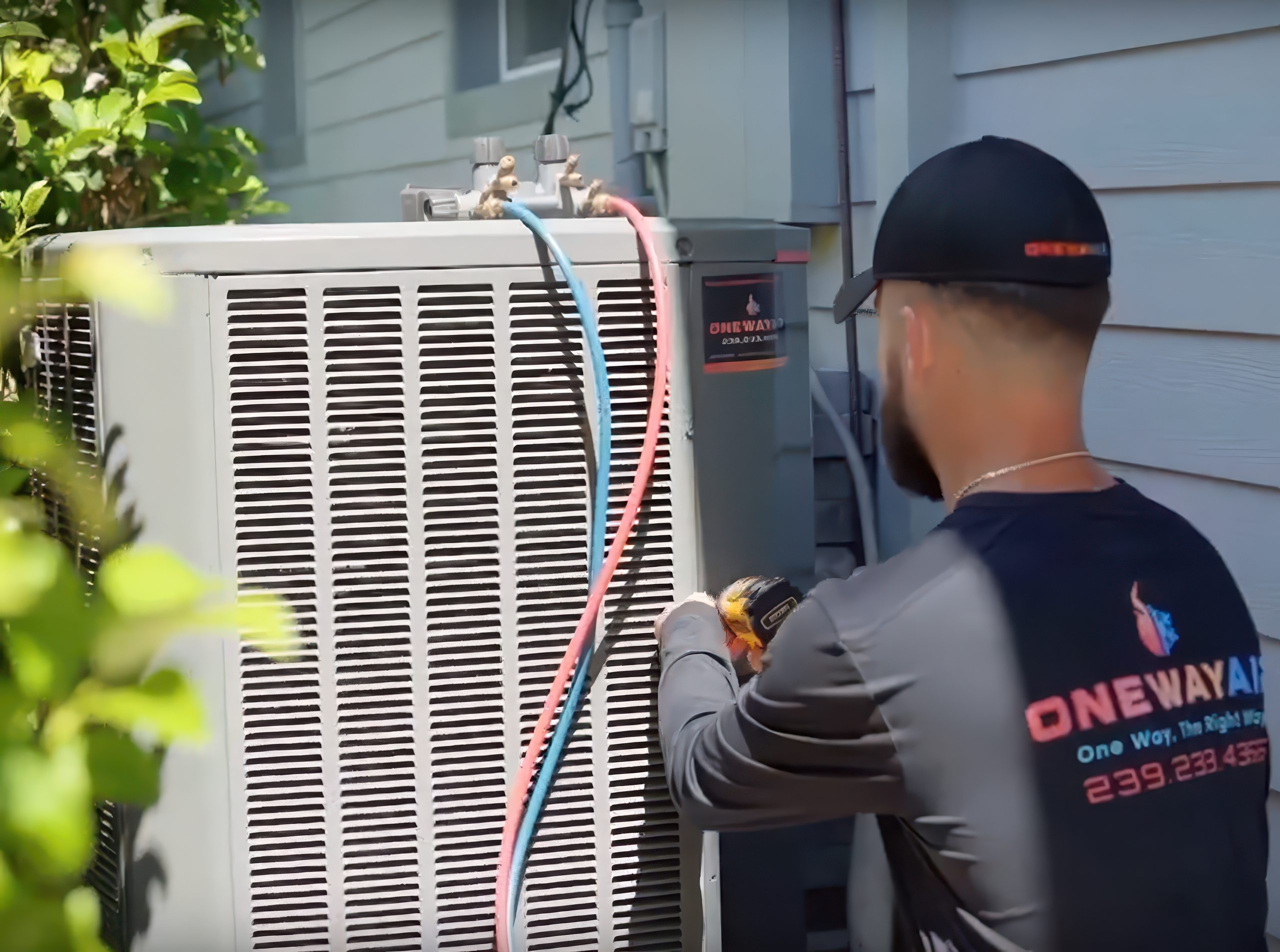If you’re researching or buying HVAC equipment, you’ll come across the term BTU—but what does BTU mean and how could it affect your purchase?
Does the BTU rating of air conditioning units mean the same thing as the BTU rating of furnaces or heat pumps?
Here’s what you need to know about BTU so that you can select the right size of air conditioner for home cooling.
WHAT DOES BTU MEAN?
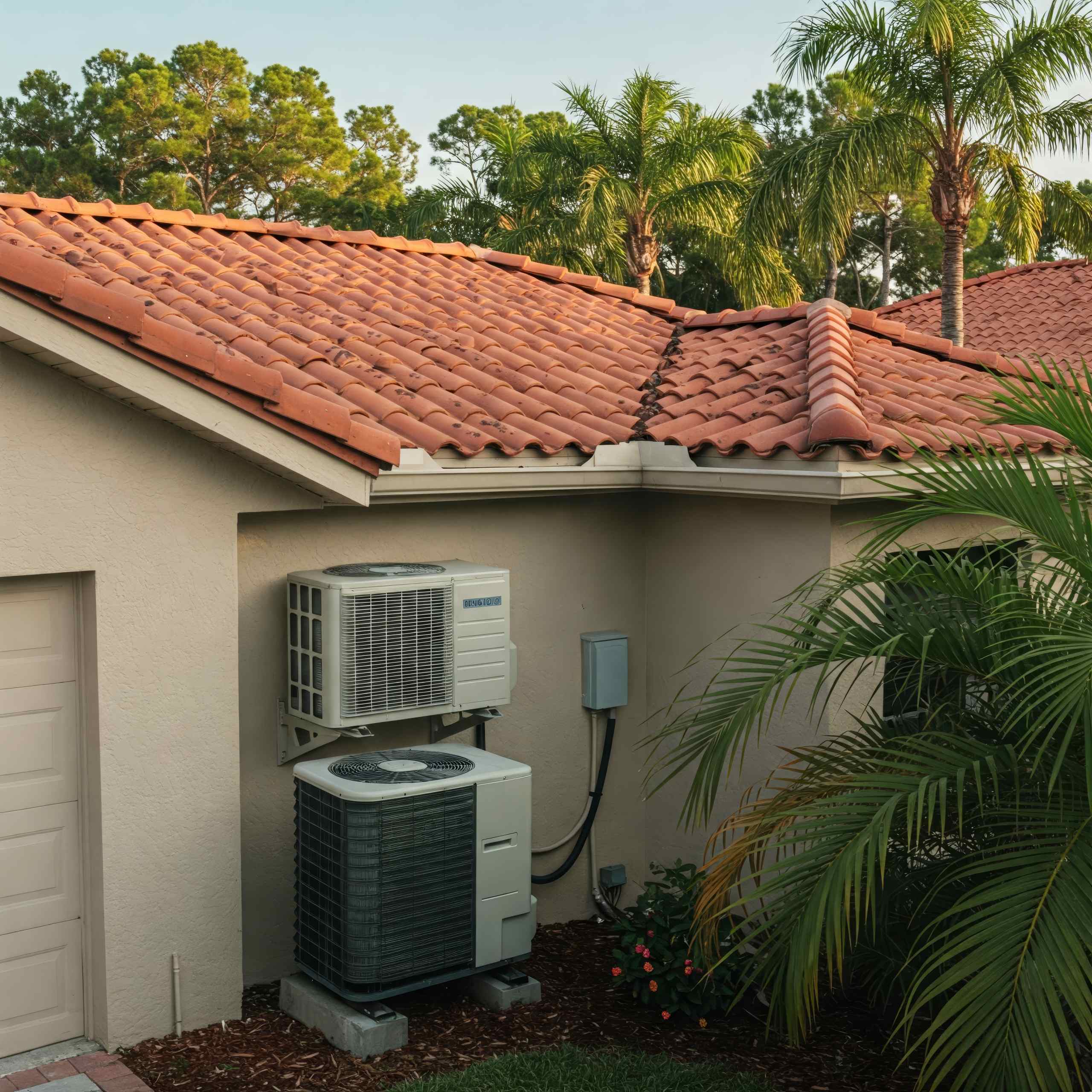
BTU stands for British Thermal Unit. This is the traditional unit of measurement for HVAC equipment, indicating how much heating or cooling energy a unit requires to add or remove heat from a space. The definition of one BTU is the amount of energy required to lower or raise the temperature of one pound of water by one degree Fahrenheit.
STAY COOL ALL YEAR ROUND WITH ONE WAY AIR…
The team at One Way Air installs, services, and repairs all types of air conditioning systems in Southwest Florida. Get in touch with us here for a quote or call 239-233-4356 in emergencies.
WHY DO YOU NEED TO UNDERSTAND BTU RATINGS?
Air conditioners and heat pumps remove heat from the air inside your home to the outside in a heat transfer process.
In central air conditioning systems (as most Florida homes have), a carefully calibrated system of coils, fans, and refrigerant works in harmony, replacing hot, humid air in the home with cooler air through the ductwork.
Understanding how much cooling power you need to adequately cool a space can be challenging—and that’s where BTUs come in.
BTU ratings are found on all air conditioners, heat pumps, and gas furnaces sold in the U.S. They help homeowners and HVAC professionals size AC units correctly so that the home has just the right cooling capacity.
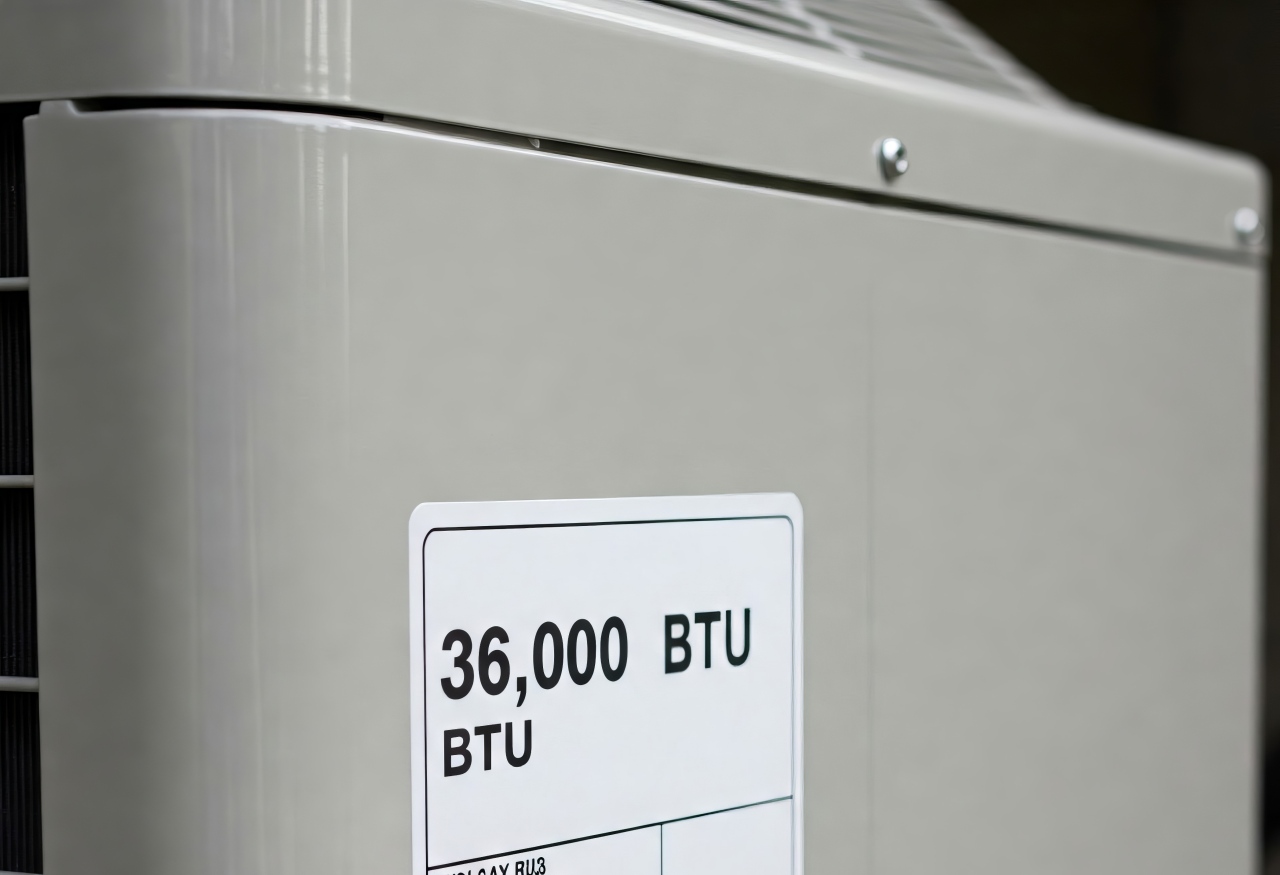
BTU ratings for central air conditioners in Florida range from around 18,000 to 60,000 BTU/h per unit. For ductless mini-split systems, which cool individual rooms, the range is 6,000 to 48,000 BTU/h per unit.
TOO BIG OR TOO SMALL: HOW BTU AFFECTS HOME COOLING
Oversized and undersized AC units can both impact cooling performance in the home and lead to AC troubleshooting issues. They may also cause other longer-term consequences for your HVAC system.
But what, specifically?
An AC unit that’s too big will:
- Unnecessarily increase energy costs.
- Short cycle, i.e., run its cooling cycle frequently for short periods.
- Inadequately cool the home if the compressor shuts off too soon.
- Increase wear and tear on parts due to short cycling.
- Shorten its life.
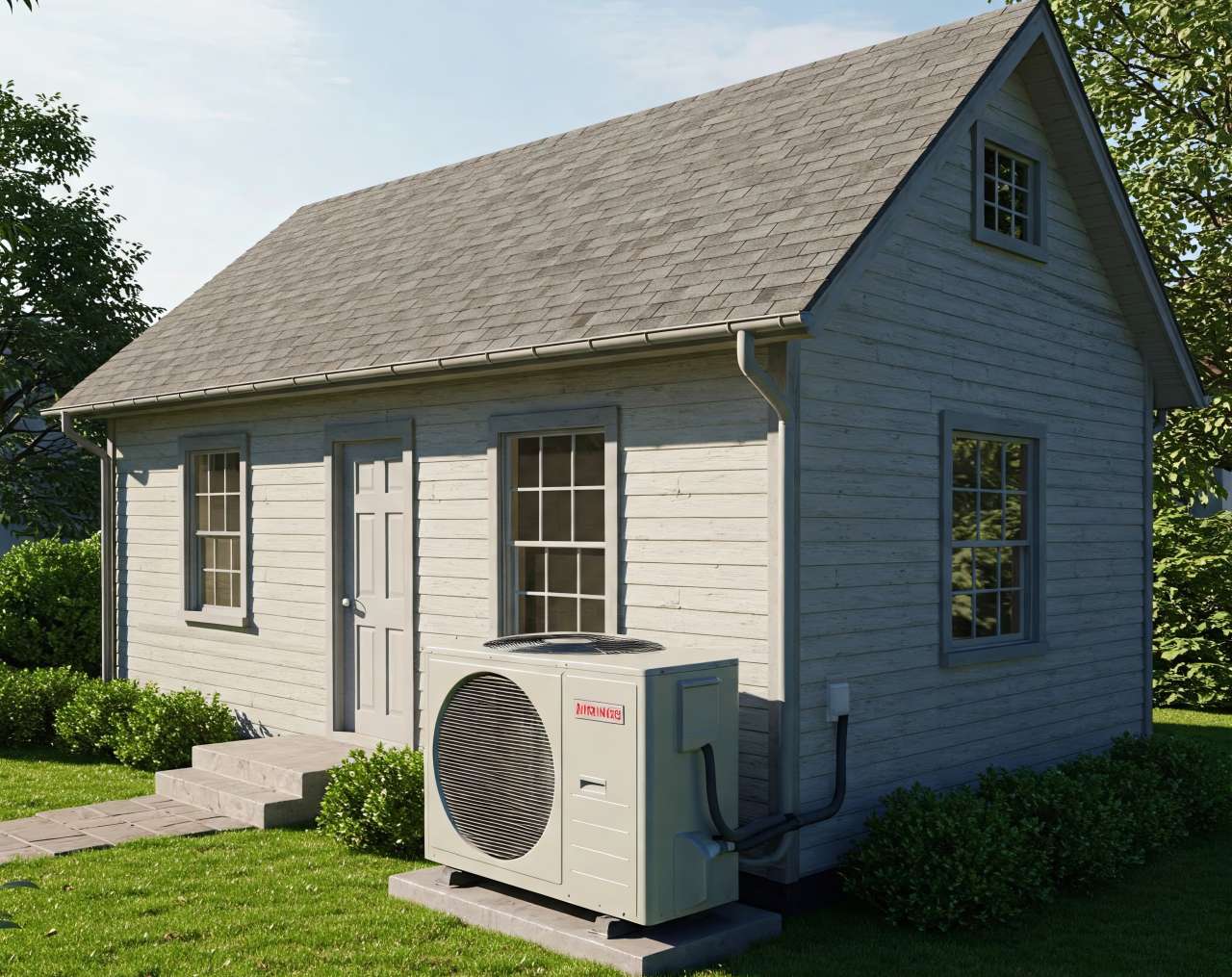
An AC unit that’s too small will:
- Unnecessarily increase energy costs.
- Run for too long.
- Never sufficiently cool your home.
- Create uneven temperatures across the home in some rooms.
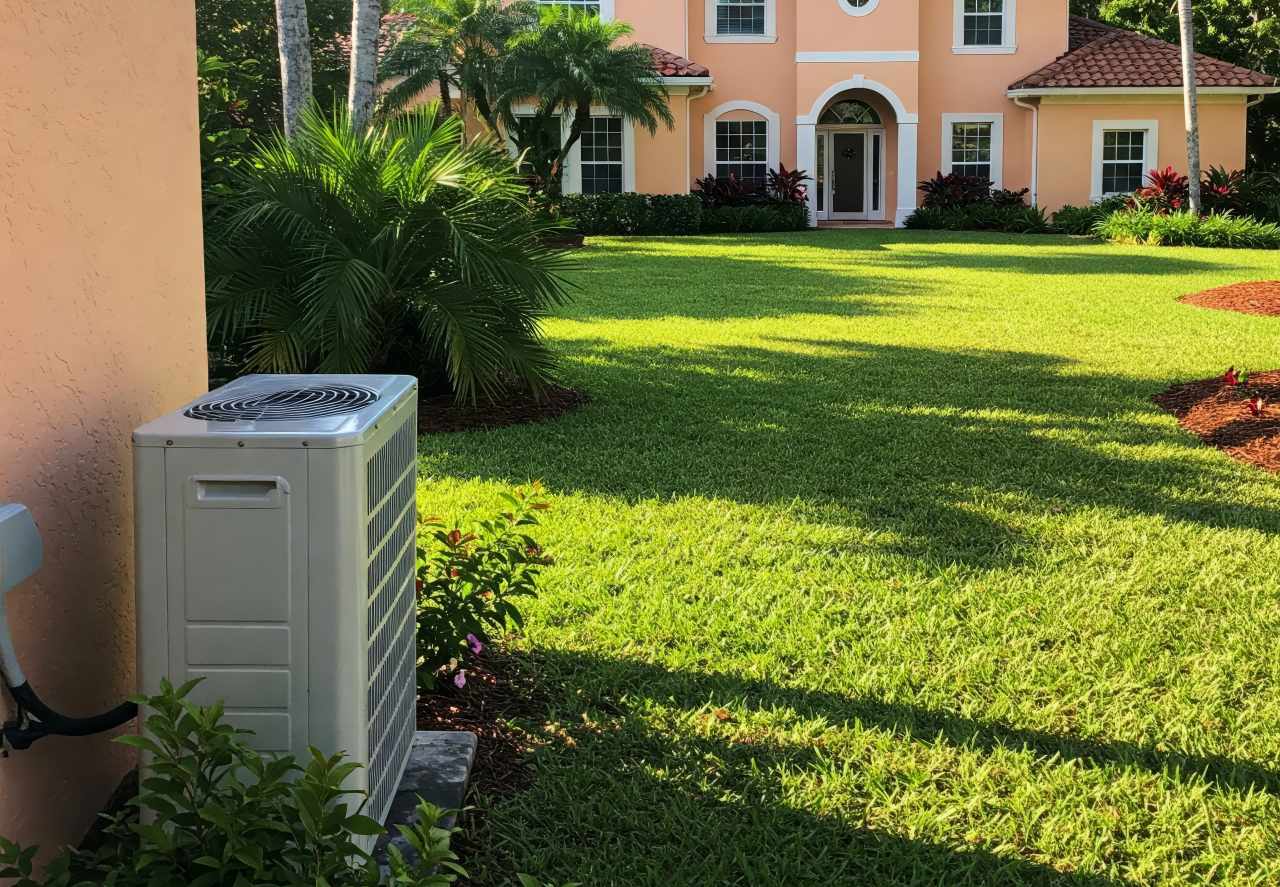
If you’re not sure if your AC is sized correctly, start by checking if your air conditioning is running efficiently.
WHAT IS TONNAGE WITH AC UNITS?
BTU ratings are always used for air conditioners but AC unit sizes may also be specified in tonnage. This is not a measure of the unit’s weight but cooling capacity—and dates back to the days before AC refrigerant when ice was used to cool spaces.
A BTU conversion can help us understand the unit’s heating capacity when specified in tons. Thankfully, that’s quite simple:
- One ton = 12,000 BTU
We cover more about how different AC tonnages relate to BTU ratings and different spaces below.
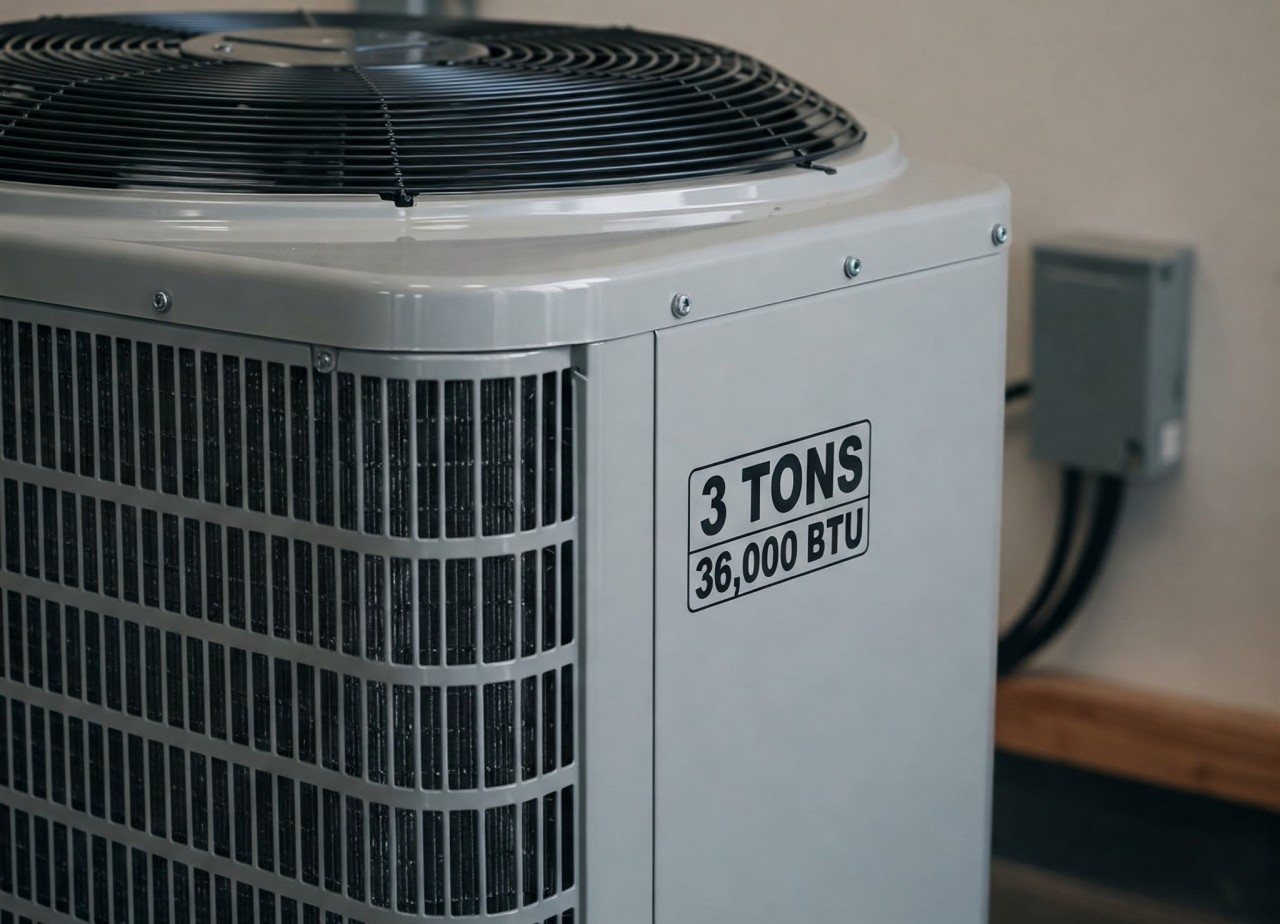
SEER RATING
While we’re on the subject of the terminology used with AC systems, you should know that the efficiency of AC units is measured by Seasonal Energy Efficiency Ratio or SEER (higher SEER = more energy-efficient cooling).
AIR CONDITIONER BTU VS FURNACE BTU VS HEAT PUMP BTU
Now you understand more about air conditioning and BTU ratings, prepare to be a little confused!
BTU ratings for heat pumps and gas furnaces are applied somewhat differently to AC. What does BTU mean for furnaces and heat pumps?
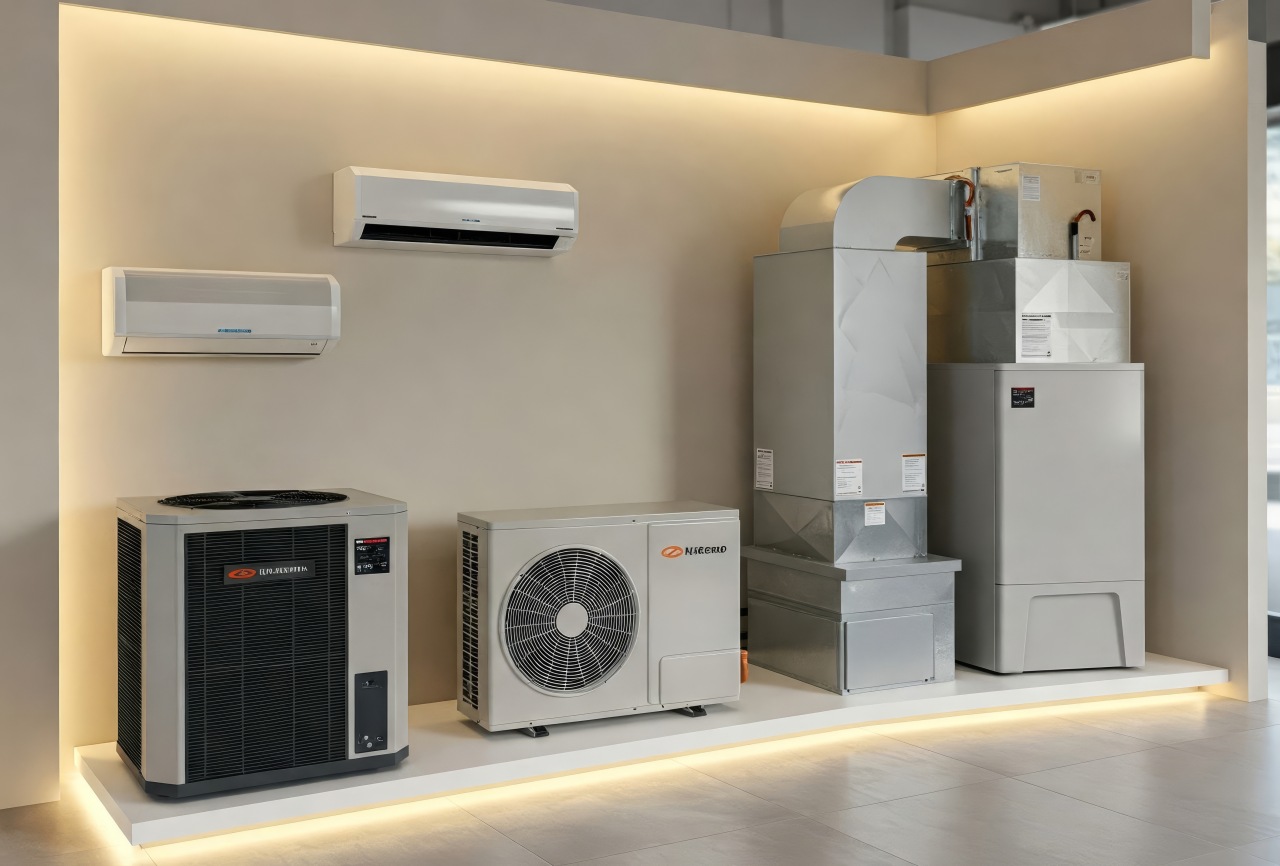
FURNACE BTU RATINGS
Furnace BTU ratings indicate heating capacity, i.e., how much heat the furnace can produce per hour. Furnaces are rated in input BTU and output BTU:
- Input BTU: The amount of fuel energy consumed (e.g., a 100,000 BTU furnace might use 100,000 BTU of natural gas per hour).
- Output BTU: The actual heat delivered, which depends on efficiency (e.g., an 80% efficient furnace would provide 80,000 BTU of heat from 100,000 BTU input).
Residential furnaces typically range from 40,000 to 120,000 BTU/h in output BTU. Their efficiency is measured in AFUE (Annual Fuel Utilization Efficiency). Just like with air conditioning, sizing your furnace correctly is important for conserving energy, heating the home adequately, and protecting your HVAC system.
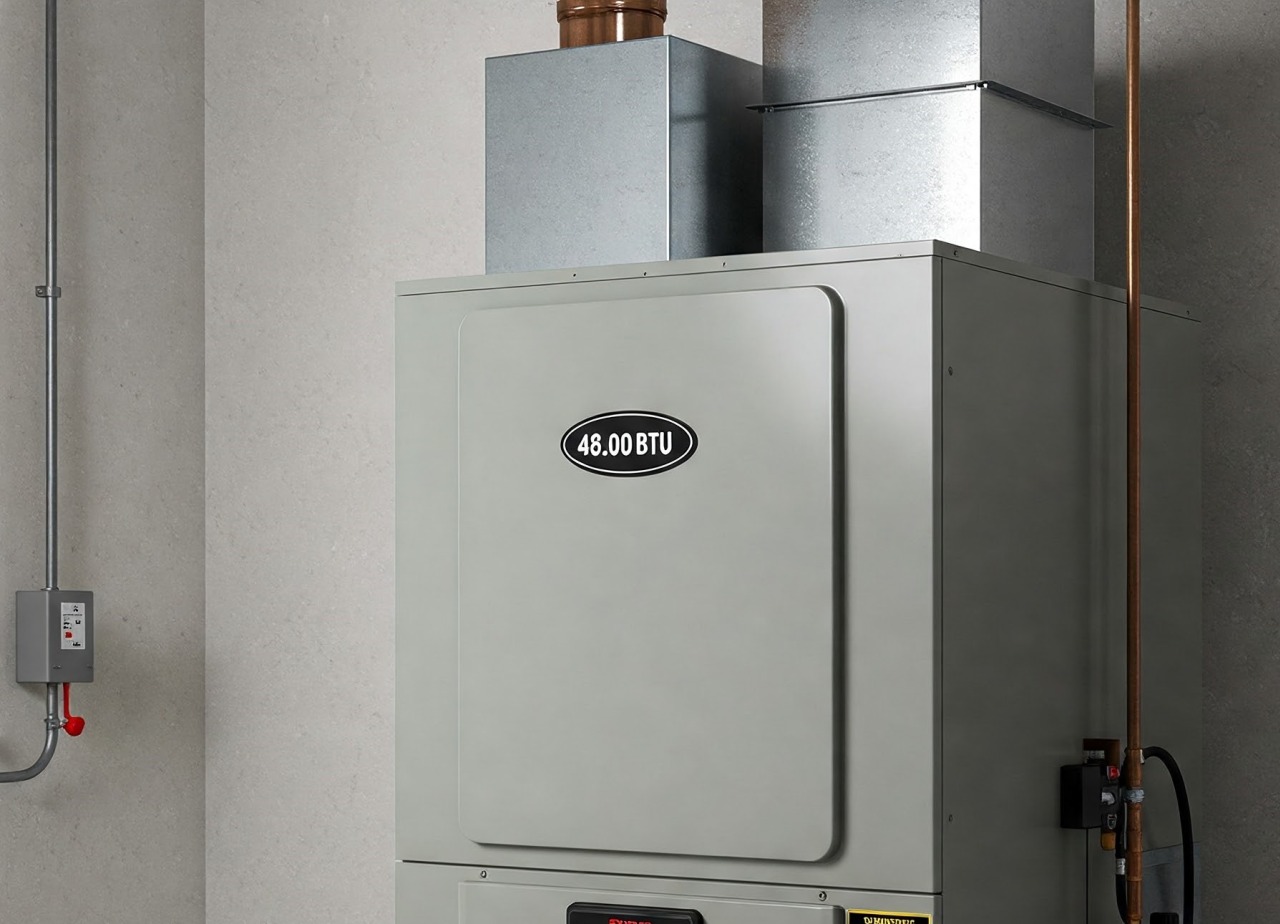
HEAT PUMP BTU RATINGS
Heat pumps both heat and cool a home so BTU ratings need to indicate both.
- Size is often measured in tonnage (1 ton = 12,000 BTU/h).
- Heating capacity can vary based on outdoor temperature (colder weather reduces efficiency).
- Efficiency is measured by HSPF (Heating Seasonal Performance Factor) for heating and SEER (Seasonal Energy Efficiency Ratio) for cooling.
Most residential heat pumps in Florida typically range from 18,000 to 60,000 BTU/h (1.5 to 5 tons) and more attention should usually be paid to the cooling capacity than heating capacity.
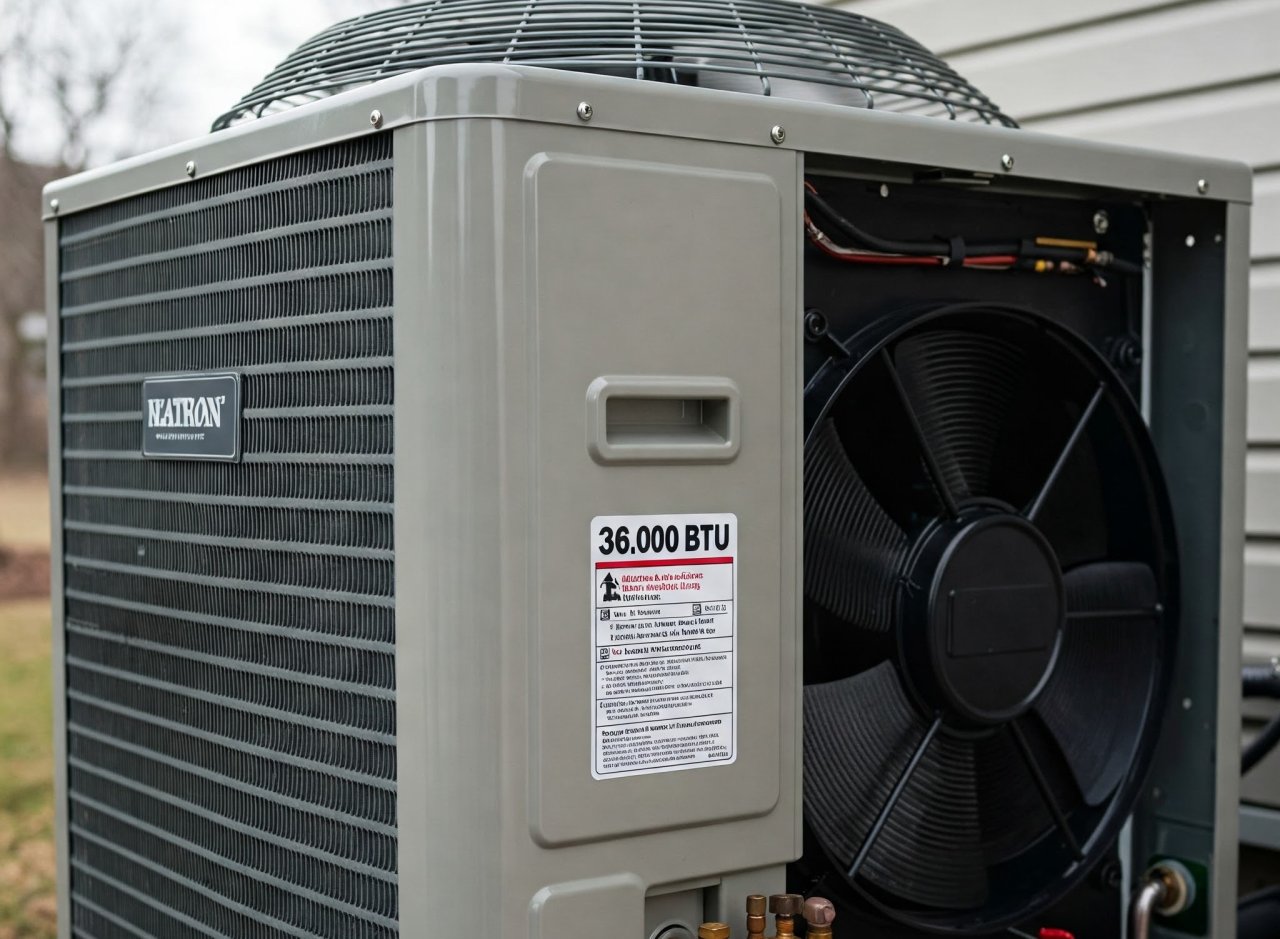
CALCULATING YOUR BTU NEEDS
Determining the appropriate BTU rating for different spaces and ensuring that you size your AC correctly is easier with a basic formula.
BTU PER SQUARE FOOT
Most commonly, BTU requirements are calculated based on room size in square feet. We can use the following as a guideline for Florida homes with heat and high humidity:
- 24,000 BTU per 1,000 sq. ft., or
- 24 BTU per square foot
So, 12,000 BTU is required for a 500-square-foot room while central air conditioning with a unit of 48,000 BTU should be adequate for 2,000 sq. ft, of space.
This table explains how both BTU and tonnage convert to the size of the space to be cooled.
|
APPROX. COOLING AREA |
TONNAGE |
BTU/h RATING |
|---|---|---|
|
150-300 sq. ft. |
0.5 Ton |
6,000 BTU |
|
400-600 sq. ft. |
1 Ton |
12,000 BTU |
|
600-900 sq. ft. |
1.5 Tons |
18,000 BTU |
|
900-1,200 sq. ft. |
2 Tons |
24,000 BTU |
|
1,200-1,500 sq. ft. |
2.5 Tons |
30,000 BTU |
|
1,500-1,800 sq. ft. |
3 Tons |
36,000 BTU |
|
2,100-2,400 sq. ft. |
4 Tons |
48,000 BTU |
|
2,700–3,000 sq. ft. |
5 Tons |
60,000 BTU |
The average home size in Florida is around 1,600 square feet, meaning that a central air conditioner should have a rating of around 36,000 BTU/h for adequate cooling capacity.
OTHER FACTORS AFFECTING AC SIZING:
The square footage of the space is the major factor affecting the required size of an air conditioner but it’s not the full story. The following factors must also be taken into account:
- Ceiling height: Higher ceilings may require more BTUs.
- Your home’s floor plan: single-story homes have different requirements to multi-level homes.
- Sun exposure: Sunlit rooms need more cooling.
- Insulation: Poor insulation increases cooling needs (newer homes generally have better insulation)
- Energy efficiency of your windows and doors.
- Number of occupants: More people generate more heat.
- Appliances and electronics: Kitchens and offices need higher cooling capacity.

HOW DO YOU CONVERT KILOWATTS TO BTU?
Kilowatt is another measurement of cooling capacity you may see on HVAC equipment. It measures how much heat the AC unit removes per hour.
One Kilowatt is equal to 3,412 BTU/h, so here are some quick conversions for different KW readings:
|
APPROX. COkWOLING AREA |
TONBTU/h RATINGNAGE |
|---|---|
|
2 kW |
6,824 BTU |
|
3 kW |
10,236 BTU |
|
5 kW |
17,060 BTU |
|
7 kW |
23,884 BTU |
|
10 kW |
34,120 BTU |
|
15 kW |
51,180 BTU |
|
20 kW |
68,240 BTU |
WHAT’S THE BEST WAY TO SIZE YOUR AC CORRECTLY?
A new AC unit can reduce bills, increase your family’s comfort, and even help to increase your home’s value—but only if it’s the right size.
Proper HVAC sizing avoids inefficiency, high energy costs, poor humidity control, and a shorter lifespan for your equipment.
The above guidelines are general. Two homes of the same size in the same neighborhood can have different requirements.
The best way to ensure the right size of AC unit for your home is to work with an experienced Florida HVAC professional. A precise calculation (called a “Manual J Calculation”) can be used to work out how much cooling capacity your home requires.
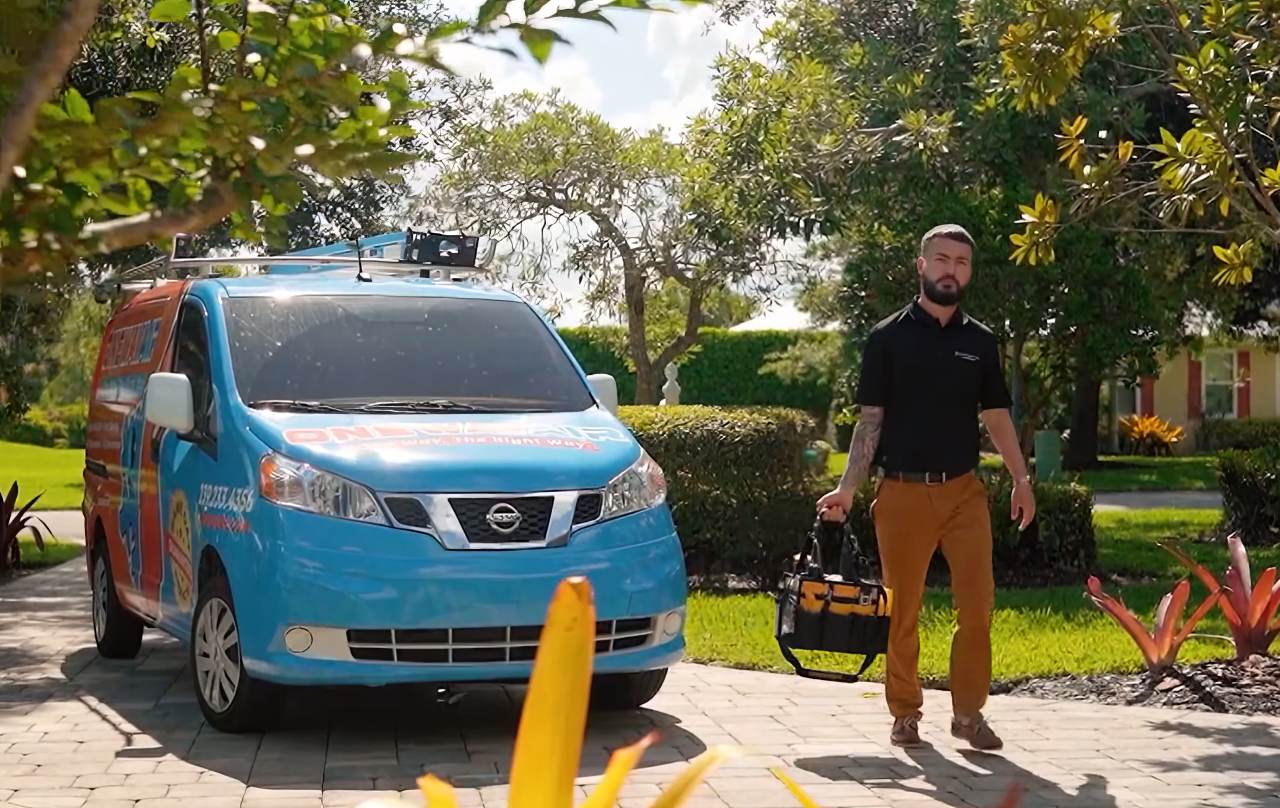
The cost of AC in Florida is high so it’s important to be able to rely on professionals who can accurately size your AC and help maintain your air conditioning system every year as recommended.
FAQs
A correctly sized and well-maintained AC system should run for 15 to 20 minutes, two or three times every hour—with longer cycles in the higher temperatures of summer.
That depends on the size of your home, its insulation, ceiling heights, sun exposure, number of occupants, and other factors. A more powerful AC unit will provide more cooling power but if it’s too large for your home, it can also create inefficiencies.
The ideal BTU depends on factors like room size, insulation, ceiling heights, exposure to heat sources (such as sunlight and cooking), as well as the number of occupants, and more.
If you’re investing in a new AC unit in Florida, you expect it to last around 8-14 years before it needs replacement if it is properly maintained. The excessive heat and humidity here reduce the lifespan of AC units compared to cooler parts of the country.
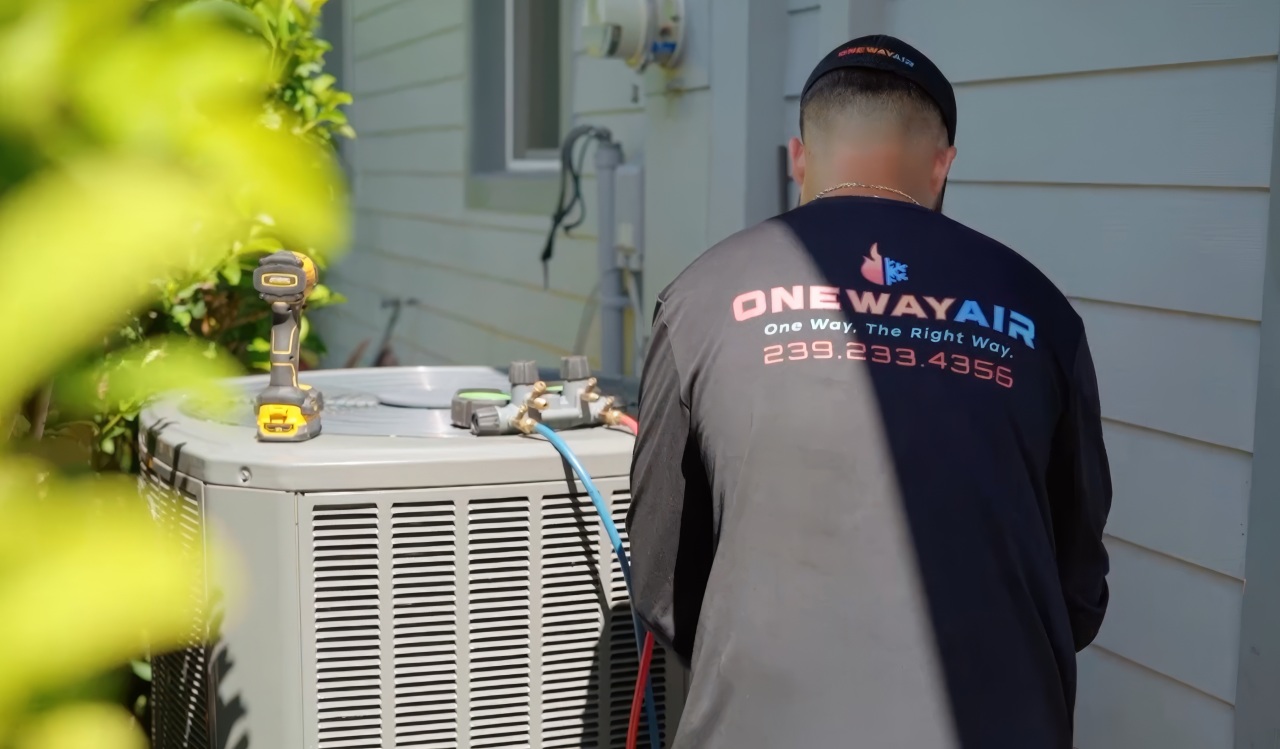
GET THE RIGHT SIZE AC FOR YOUR HOME
Contact an AC professional at One Way Air for an inspection of your HVAC system and help with sizing an air conditioner.

